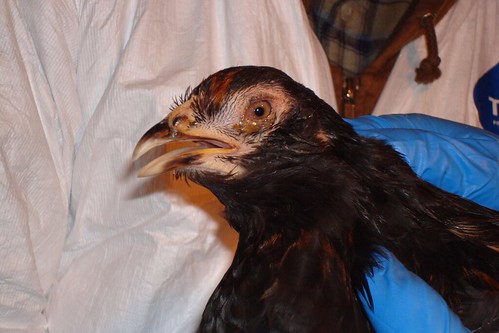
The December 2014 to June 2015 avian influenza outbreak was the largest animal health emergency in U.S. history. The virus contributed to the death of more than 48 million birds, either due to infection with the virus or depopulation to prevent additional spread. The virus was introduced into the U.S. by wild migratory waterfowl and then spread from farm to farm in a number of ways. This included farms sharing equipment, vehicles moving between farms without being cleaned or disinfected, employees moving between infected and non-infected farms, rodents and small wild birds reported inside some poultry houses, and feed stored outside or without appropriate biosecurity measures. The virus spread was also assisted by instances of noncompliance with industry-recommended biosecurity practices.
Fortunately, avian influenza poses little threat to human health and food safety. Human infections with avian influenza are rare and most often occur after direct contact with an infected bird. Avian influenza does, however, adversely affect food availability and the economy. If a single bird became infected with the highly pathogenic avian influenza virus during the 2014-15 outbreak, every bird in the same commercial poultry house – which contains an average of 30,000 birds – was depopulated.
According to a report from the Congressional Research Service, the overall economic impact of that outbreak was $3.3 billion in the United States.
“It’s tempting to blame wildlife for the outbreak,” said Dr. Nathaniel Tablante, a University of Maryland Extension poultry veterinarian, “but people should focus on what we can control on our end. An ounce of prevention can go a long way toward protecting our economy and food security from the introduction and spread of disease-causing organisms in poultry flocks.” This is why it is essential to strictly follow and enforce biosecurity procedures.
Tablante created avian influenza emergency response videos for three different audiences: commercial poultry farmers, technical service personnel, and backyard poultry producers. The videos are available in English with Korean, Vietnamese, Chinese and Spanish subtitles. These videos were funded and made possible through the USDA’s National Institute of Food and Agriculture’s Smith-Lever Special Needs Competitive Grants Program, which supports projects that serve public needs in preparation for, during and after local or regional emergency situations.
“Poultry producers are the backbone of the food and agriculture industry,” said Tablante. “It’s my commitment to ensure that we protect them.”
Tablante and other poultry specialists from University of Maryland Extension partner with the Extension Disaster Education Network (EDEN) and its Avian Influenza Preparedness and Response Team to maintain the eXtension Community of Practice on Avian Influenza. EDEN provides a web-based communications network that provides real-time information and research-based educational resources for Extension agents and other stakeholders.
NIFA invests in and advances agricultural research, education and extension and seeks to make transformative discoveries that solve societal challenges.
Since 2009, USDA has invested $19 billion in research and development touching the lives of all Americans from farms to the kitchen table and from the air we breathe to the energy that powers our country. Learn more about the many ways USDA scientists are on the cutting edge, helping to protect, secure and improve our food, agricultural and natural resources systems in the USDA Medium Chapter: Facilitating Discovery: Boosting Competiveness through Better Research and Improved Technology.
